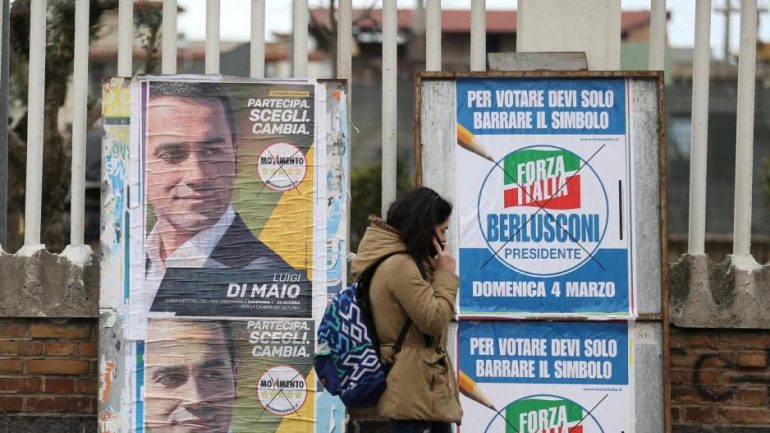Italians vote on March 4 to elect MPs and senators in a fragmented political landscape and a complex electoral system that leaves room for many post-election scenarios:
Victory of the center-right coalition
"It is not very likely that a political force will secure an absolute parliamentary majority, but for a year now there has been one that could do it. The right, "said Roberto D'Alimonde, director of the Department of Political Science at the University of Luiss in Rome.
The coalition consists of four parties, mainly Silvio Berlusconi's Forza Italia (center-right) and Matteo Salvini's Lega (far right). The agreement between them stipulates that the party with the largest percentage will lead the government.
If Forza Italia is first, Silvio Berlusconi, who has no right to be elected after being convicted of tax fraud, has said he wants Antonio Tagiani to take over as prime minister, who has not yet said he is ready to step down. Presidency of the European Parliament.
If Lega comes first, then Matteo Salvini will become prime minister… provided Berlusconi keeps his word and supports him.
Great coalition
Brussels is already betting on the scenario of forming a grand but German coalition between Forza Italia and the Democratic Party, two pro-European parties.
During the election campaign, neither Berlusconi nor Democratic Party leader Matteo Renzi mentioned such a possibility. But this is the scenario that was implemented after the last parliamentary elections in 2013.
According to the website Votewatch Europe, Forza Italia MEPs in 74% of cases voted just like Democratic MEPs and only 36% as Lega MEPs voted.
But there is no guarantee that the Democratic Party, Forza Italia and their pro-European allies, possibly reinforced by some Lega figures who are not very happy with its recent nationalist turn, will secure enough seats to have a majority in both. bodies of the Italian Parliament.
Another hypothetical coalition, but which is strongly denied by the stakeholders, could unite the Eurosceptics of the League and the 5 Star Movement. But this alliance will probably not have enough seats in parliament, while resistance within the two factions will be strong.
Without a parliamentary majority
The latest polls suggest the right-wing coalition with 38% of the vote (17% Forza Italia, 13% Lega), the 28-Star Movement with 5% and the center-left coalition with 26%. But the undecided amount to millions.
If there is no governing majority, President Sergio Matarella will replace the current government of Paolo Gentiloni, who does not need the confidence of parliament to manage current affairs.
In any case, the process of forming a government will be time consuming. The two houses of parliament will meet on March 23rd to elect their presidents and form their own parliamentary groups. Only then will Sergio Matarella start consultations.
But Italy has learned to live in uncertainty: it has met 60 governments since the founding of the Italian Republic in 1946.
